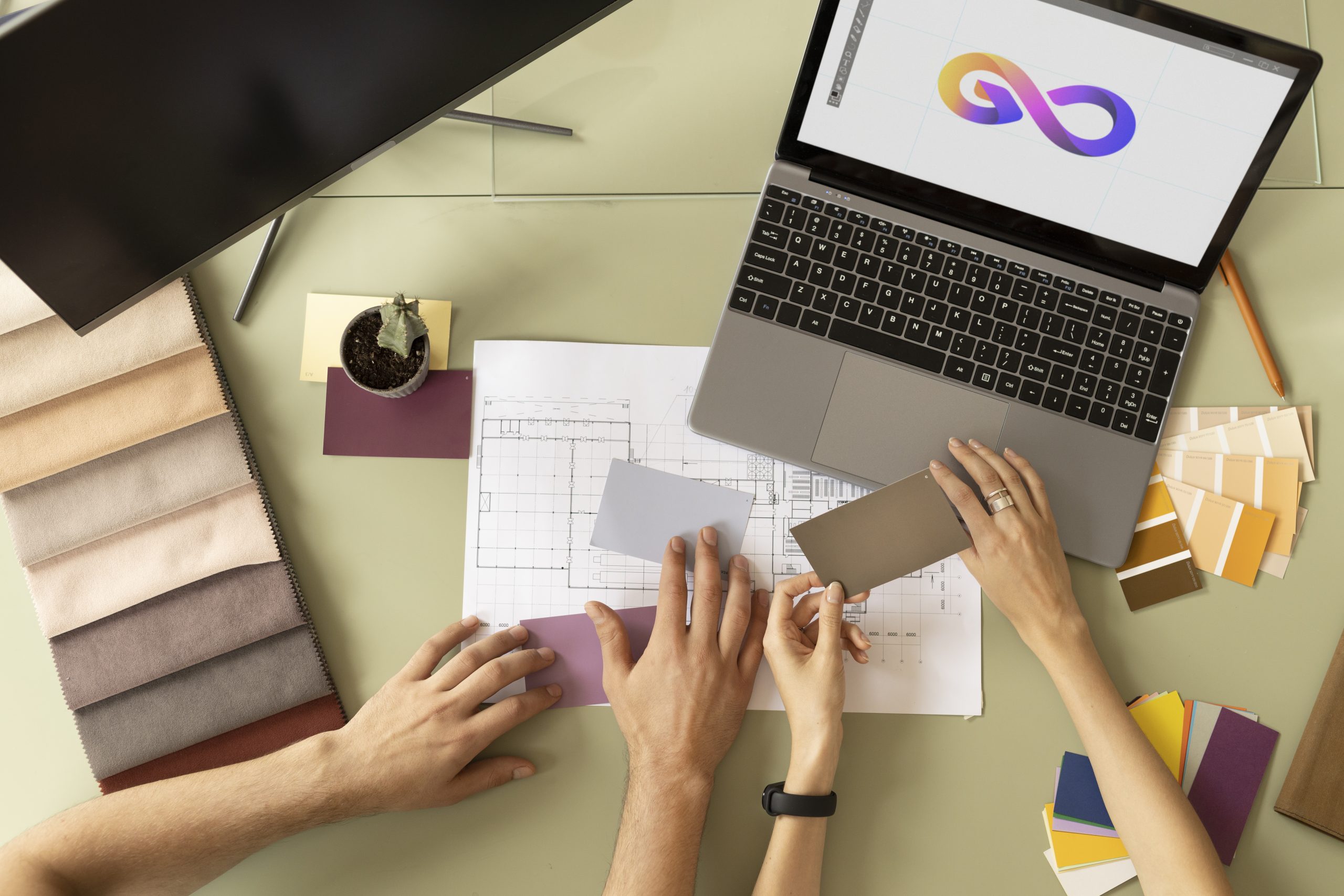Ready to embark on the journey of crafting your own logo in Illustrator? As you navigate the intricacies of design, you’ll uncover the power of shapes, colors, and typography in shaping your brand’s visual identity. But what truly sets a logo apart? Stay tuned to unravel the secrets of creating a logo that not only captures attention but also resonates with your audience on a deeper level. Get ready to unleash your creativity and master the art of logo design in Illustrator like a pro.
Brand Identity and Philosophy
When defining your brand identity and philosophy, it is crucial to understand what sets your brand apart from competitors and how it resonates with your target audience. Color psychology plays a significant role in evoking emotions and perceptions. Choose colors that align with your brand message and appeal to your audience. Symbolic imagery can enhance brand recognition and convey deeper meanings. Incorporate elements that reflect your brand values and resonate with your customers on a symbolic level. Typography choices are essential in conveying the right tone and personality. Select fonts that are legible, align with your brand voice, and enhance the overall design. Visual storytelling through your logo can create a connection with your audience. Use design elements that tell a story or evoke curiosity. Embracing minimalist design trends can help create a clean and timeless logo that focuses on essential elements, ensuring clarity and memorability.
Logo Design Planning Process
Embark on the journey of logo design planning by delving into the strategic process of crafting a visual identity that embodies your brand essence and captivates your target audience. Start by sketching out various ideas to visualize different concepts based on your brand identity. Consider color psychology to evoke specific emotions and make your logo visually appealing. When selecting typography, choose fonts that align with your brand’s personality and message. Concept visualization involves refining your sketches multiple times to ensure clarity and relevance. Don’t forget the importance of the logo iteration process; present initial concepts to gather feedback and refine your design accordingly. By incorporating sketching techniques, color psychology, typography choices, concept visualization, and the logo iteration process, you will be on the right path to creating a logo that truly represents your brand while resonating with your audience.
Illustrator Tools for Logo Creation
Delve into the world of Illustrator tools for logo creation to unleash your creativity and bring your brand identity to life with precision and flair. When tackling logo creation, draw inspiration from various sources, stay updated on design trends, and engage in creative brainstorming sessions. Visual storytelling plays a crucial role in logo design, as it conveys the essence of your brand to your audience. Utilize color psychology to evoke specific emotions and associations through your logo’s color palette.
In Illustrator, you can experiment with adding text by selecting fonts that resonate with your brand’s message and adjusting text elements for a polished finish. Incorporate shapes using Illustrator’s shape tools, allowing you to create intricate designs by combining and modifying shapes with the Pathfinder tool. Enhance your logo with vibrant colors by applying different hues to various elements. These tools and techniques in Illustrator enable you to craft a visually appealing logo that effectively communicates your brand’s identity.
Incorporating Text and Color
As you explore the realm of Illustrator tools for logo creation, seamlessly integrate text and color to infuse your design with vibrancy and meaning. When incorporating text and color into your logo, consider the following key elements:
- Text Hierarchy: Organize your text in a hierarchy that emphasizes important information and guides the viewer’s attention effectively.
- Color Psychology: Select colors that resonate with your brand’s message and evoke the desired emotions or associations in your target audience.
- Typography Selection: Choose fonts that align with your brand identity and ensure readability across different sizes and platforms.
- Brand Color Palette: Establish a cohesive color palette that reflects your brand’s personality and values, maintaining consistency in all brand communications.
- Text Placement: Strategically place text within your logo to create visual balance and harmony, ensuring it complements other design elements seamlessly.
Advanced Techniques for Logo Finalization
Explore advanced techniques to elevate your logo design to a professional level with precision and finesse. As you finalize your logo, consider making Bezier curve adjustments to achieve smooth and precise lines. Utilize Pantone swatches for accurate color selection that reflects your brand identity. Convert text into vector graphics for scalability and easy editing. Experiment with gradient effects to add depth and dimension to your design. Refine lines and curves to ensure every element is polished to perfection. By paying attention to these details, you can take your logo from good to great. Remember, the devil is in the details, and these advanced techniques will help you craft a logo that stands out.
Incorporating Bezier curve adjustments, Pantone swatch application, vector graphic conversion, gradient effects experimentation, and line and curve refinement will set your logo apart and make it truly professional.
File Export and Optimization
Optimize your logo file export process in Illustrator by ensuring you provide clients with all necessary file formats for versatile usage. When exporting your logo, consider the following:
- Color Palettes: Ensure your logo maintains its color integrity across different file formats by using consistent color palettes.
- Export Formats: Save your logo in various formats such as Illustrator, EPS, SVG, PNG, and JPG to cater to different application needs.
- Vector Graphics: Export your logo as a vector graphic to ensure scalability without loss of quality.
- Logo Sizing: Consider the sizing requirements for different platforms and provide variations that are suitable for print and digital media.
Incorporating these elements into your file export process will not only enhance the usability of your logo but also contribute to its overall design optimization. Remember to organize and name your files appropriately for easy access and maintain a workflow that prioritizes client satisfaction.
Client Communication and Feedback
Enhance your logo design process by fostering effective client communication and embracing valuable feedback throughout the creative journey. When engaging with clients, ensure to understand their brand values, target audience, and design preferences. Begin by gathering insights from a creative brief that delves into the brand’s history and the client’s vision. Communicate openly to guide the client while incorporating current design trends. Present initial logo sketches to the client for concept approval, focusing on clear communication and detailed explanations behind each design. Utilize client feedback to refine the direction of the logo, ensuring alignment with the brand’s identity. By actively involving the client in the design process and addressing their preferences, you create a collaborative environment that leads to successful logo creation. Remember, effective client communication and feedback play a vital role in shaping a logo that resonates with the brand and its audience.




